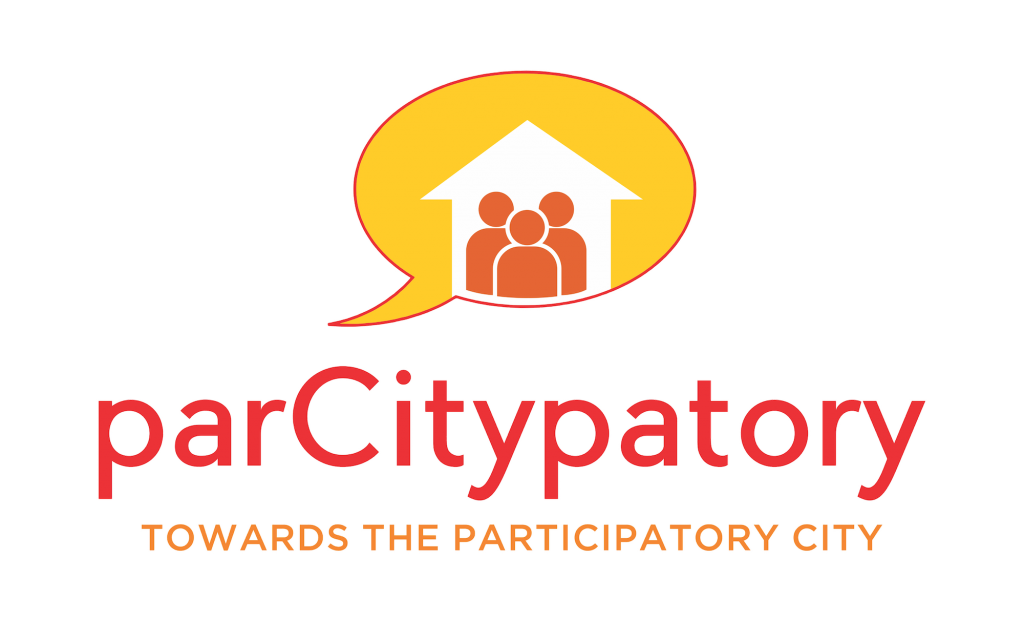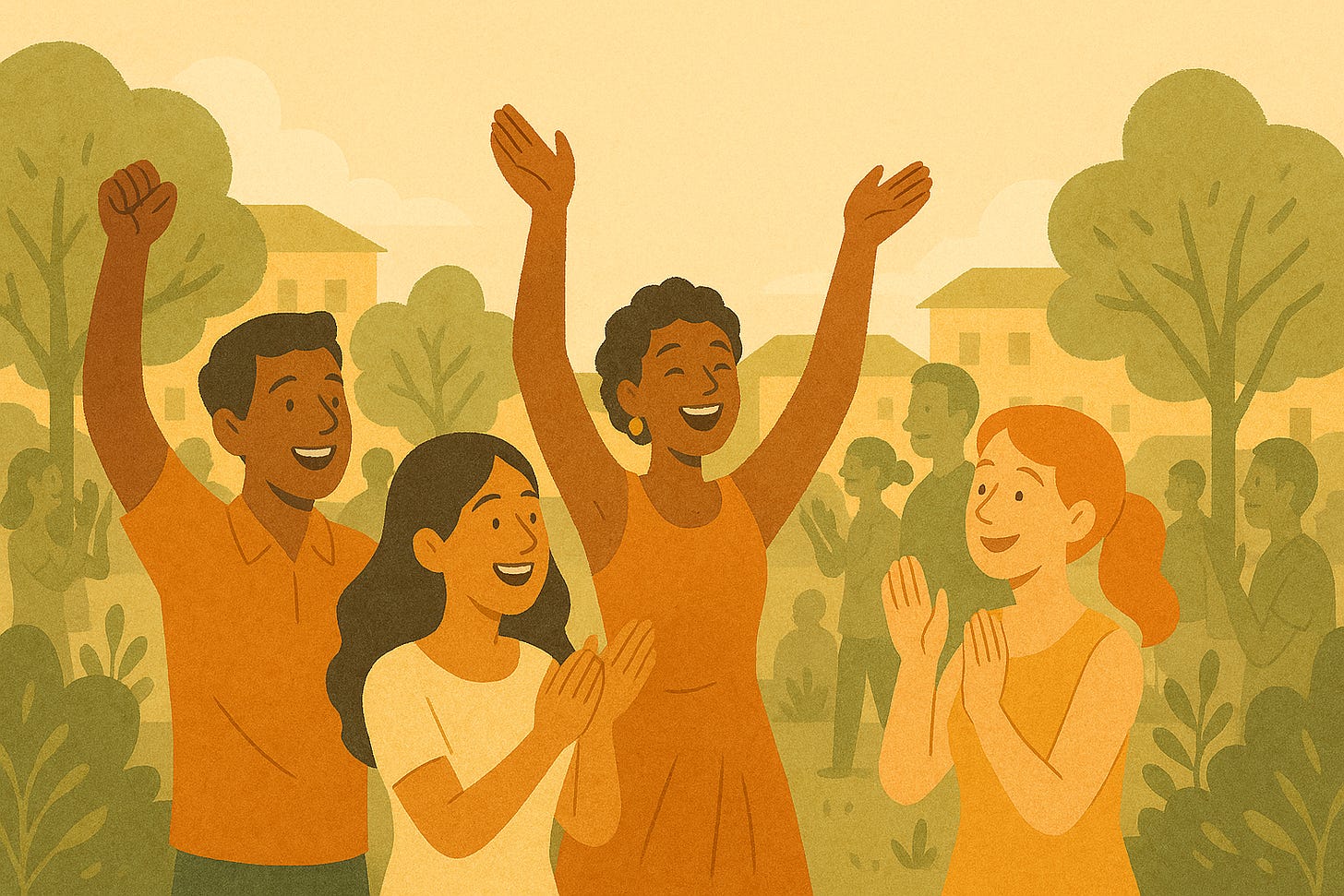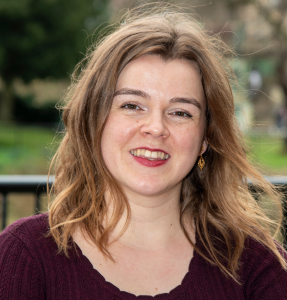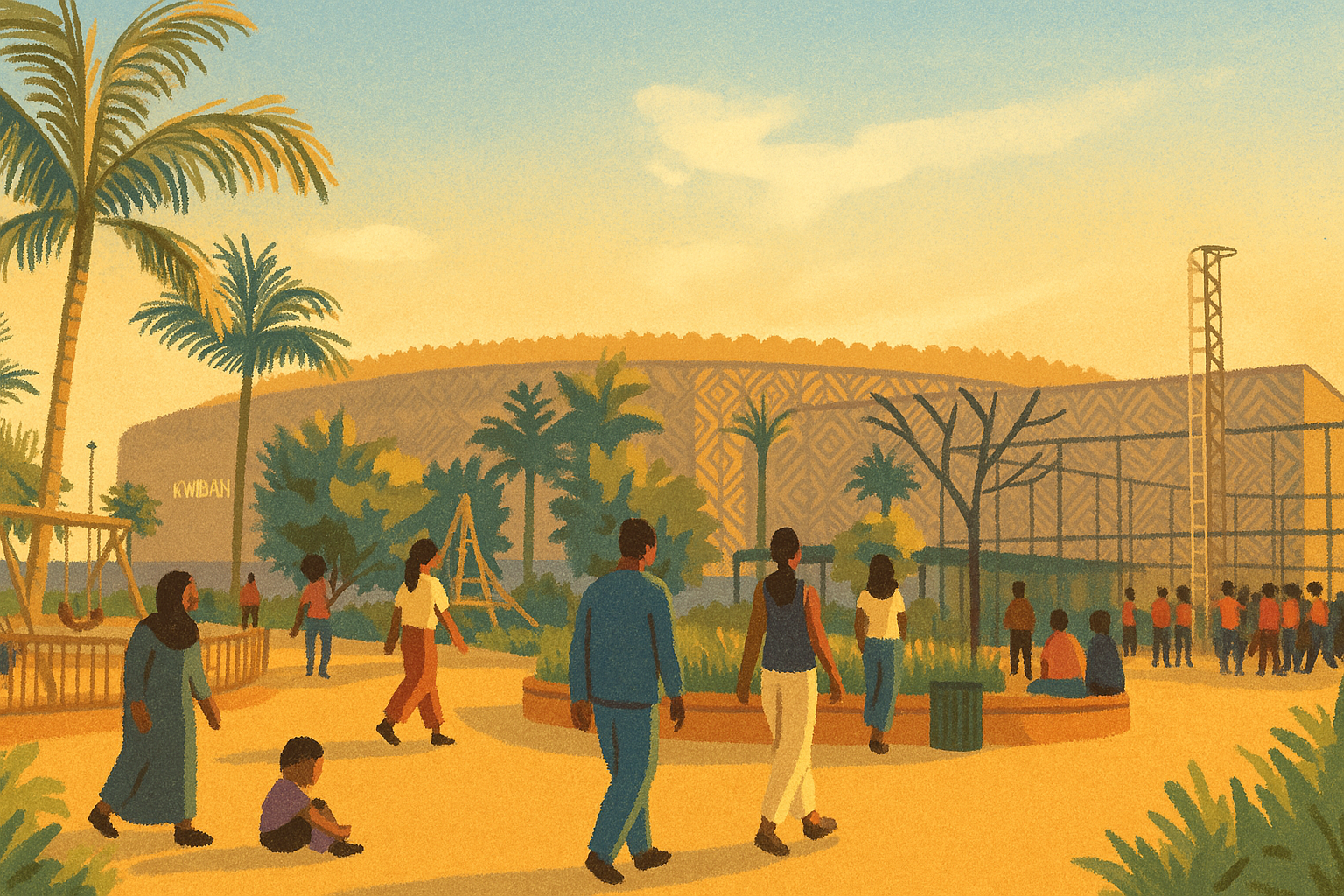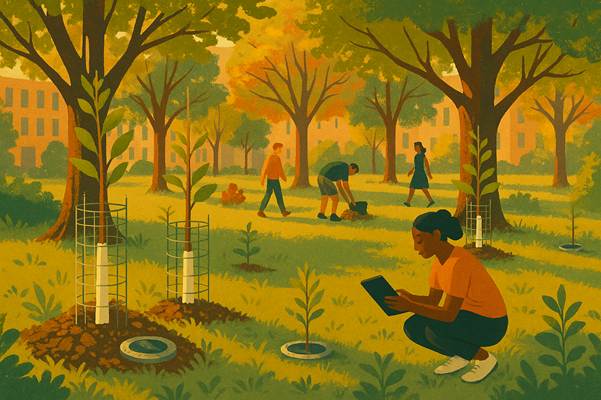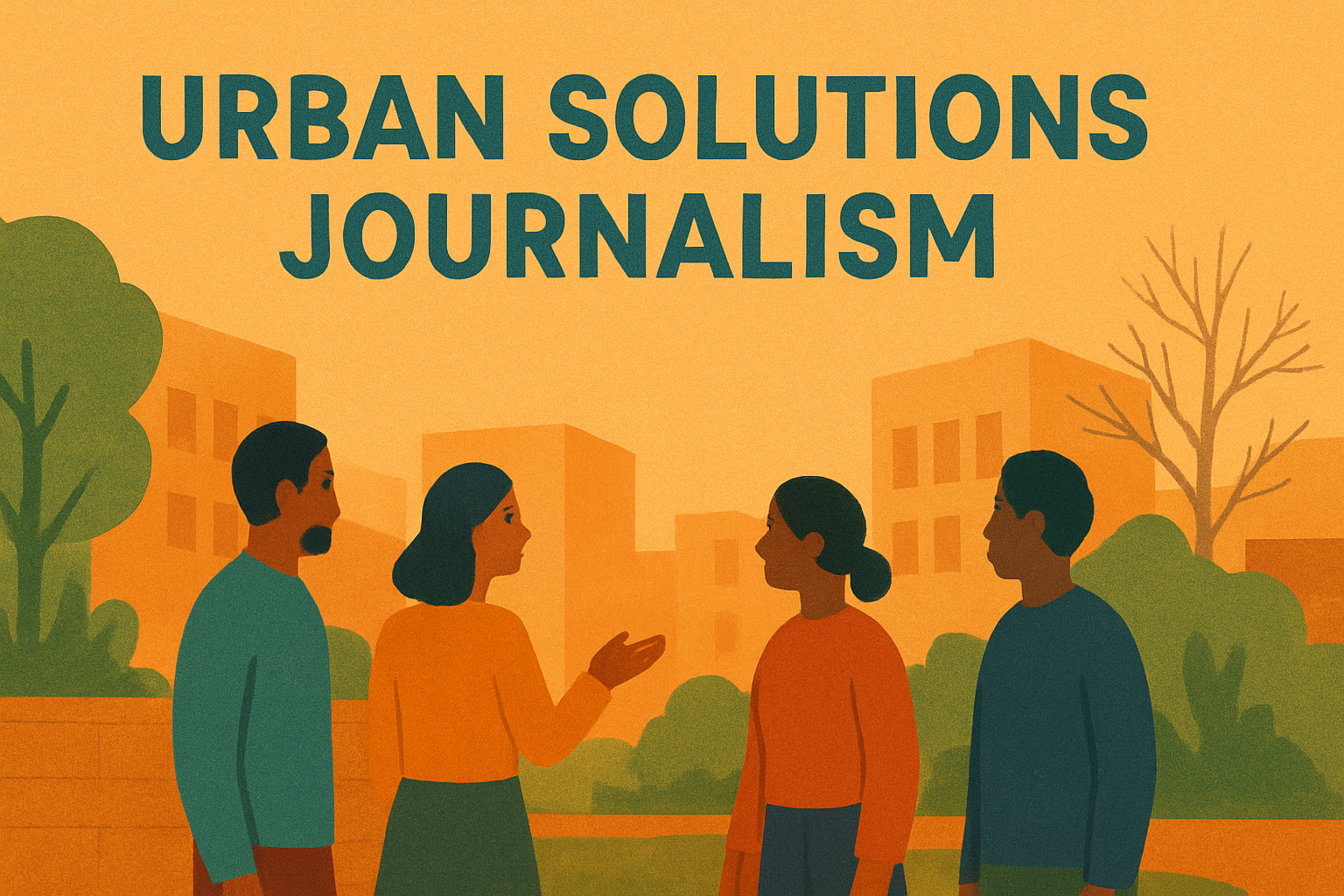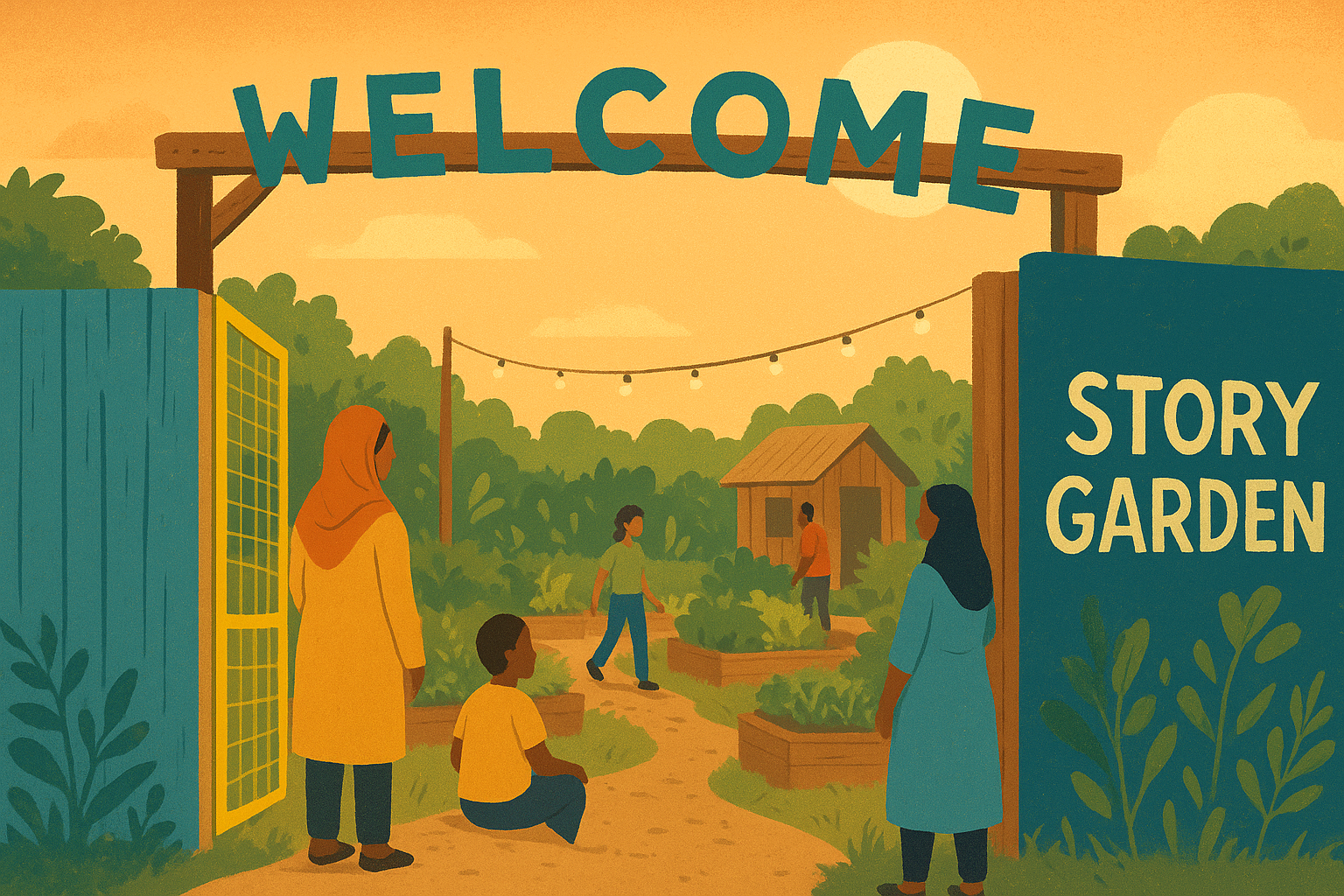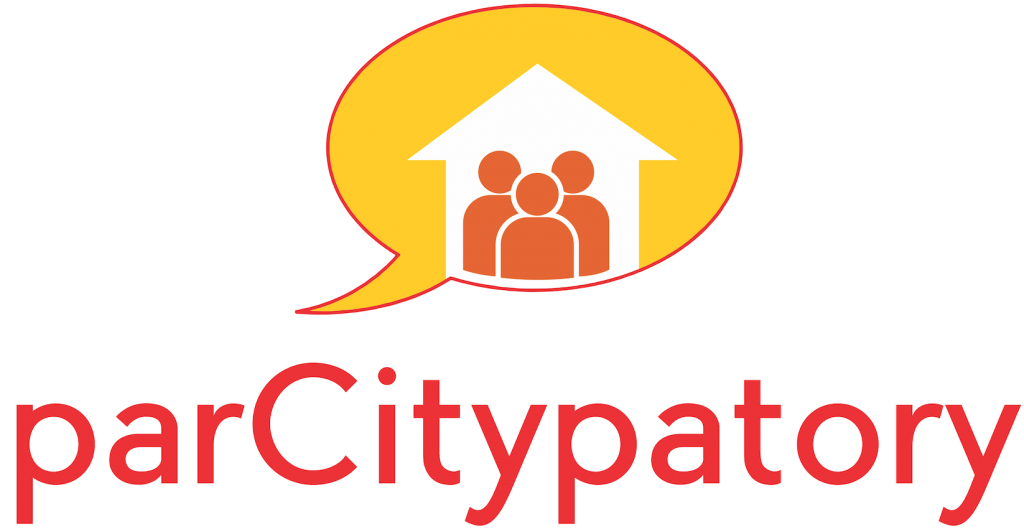The Danish capital Copenhagen is the happiest city in the world, according to this 2025 survey. But what exactly is a happy city? And why is Copenhagen leading the scoreboard? Together with happiness expert Aliénor Salmon, I explore the recipe for a Happy City and share examples from all over the world.
The London-based Institute for Quality of Life, which publishes the Happy City Index, recognises that there is no one-size-fits-all approach to happiness as cities are constantly changing. However, they share six categories that affect citizens and their overall happiness where Copenhagen scored first place: citizens, governance, environment, economy, health, and mobility. According to the index, the happiest cities are
“committed to cultivating and growing happiness, and where education, inclusive policies, the economy, mobility, environmental protection, access to green areas, and innovation are important components of official policies and evident in the solutions implemented”.
What is a Happy City?
Aliénor: For me, a Happy City allows people to rest, connect and express, whether it’s in peaceful spaces that allow them to be immersed in nature, to gather in community celebrations, or access learning opportunities where they can thrive.
Laura: In a Happy City, anyone can freely express themselves, find happy places, and co-create the city, be it through community gardening, festivals, or consultation events. Happy Cities offer opportunities and connections with others.
The concept of a Happy City is not only relevant because of how the urban environment contributes to our happiness and wellbeing , but even more so in today’s politically insecure, often threatening, climate. Big cities can sometimes exacerbate negative feelings, such as a sense of isolation and overstimulation, but they can also foster a sense of belonging and fulfilment.
In his 2013 book “Happy City. Transforming Our Lives Through Urban Design”, award-winning author and urbanist Charles Montgomery asks whether urban design is really powerful enough to make or break happiness. He argues that our life satisfaction is strongly influenced by location and that self-reported happiness correlates with many things that money cannot buy, such as leisure time, shorter commutes, good health, some form of religion, spirituality or volunteering, as well as our overall environment.
But the most important psychological aspect of the city, he says, is how it moderates our relationships with other people. As demonstrated by every major study on happiness, our relationships with others are the most important determining factor of our happiness. And as we face a growing loneliness epidemic, cities must offer opportunities for social connection.
Key ingredients
Among the endless strategies and recommendations for improving our cities—what is the recipe for a Happy City, and what ingredients do we need?
Happiness in cities is based on safety, economic opportunity and stability, and strong governance. But it also has many other ingredients that can be harder to quantify such as culture, mental health and a certain vibrancy. Based on Charles Montgomery’s book and our combined experience in urban planning and happiness research, we’ve come up with a recipe for Happy Cities based on the following key ingredients:
Inclusive spaces
The Right to the City is key to inclusive spaces. It means that we have access to urban resources, but also that we have the right to participate in and even change the city. David Harvey, a famous social scientist who pioneered this concept, said:
“The freedom to make and remake our cities and ourselves is, I want to argue, one of the most precious yet most neglected of our human rights”.
But what does this look like in practice? Inclusive spaces are accessible to everyone, regardless of age, gender, income or ability. Features can include universal design, affordable housing, and the 15-minute city concept (at least where this is a possibility).
Barcelona is a living example of this: its “Superblocks” project reclaims the streets from cars, revives the corner blocks by offering economic opportunities to local businesses, and creates green, breathable and vibrant neighbourhoods where everyone is welcome. These superblocks also embody the 15-minute concept, where schools, health services, shops and green areas are all within a walkable or bikeable distance for all residents.
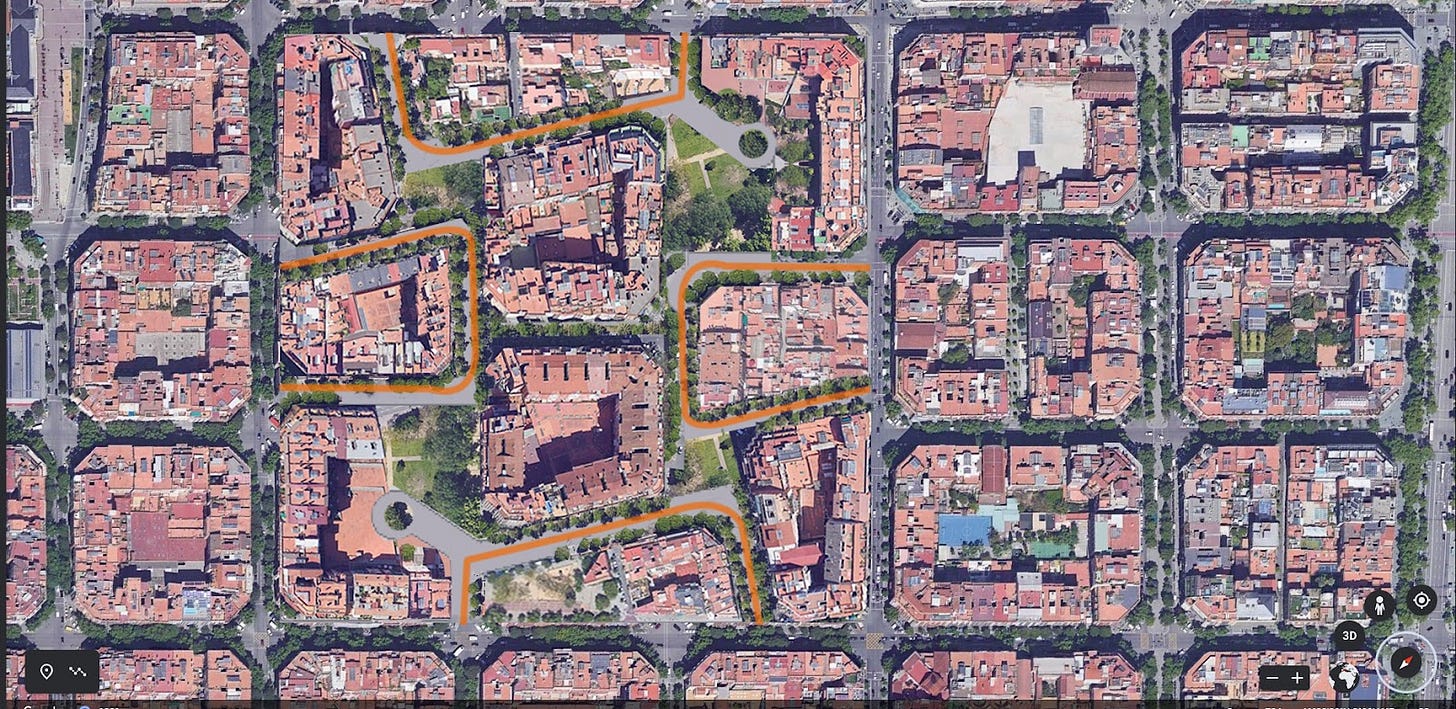
Research (see for example M. Nieuwenhuijsen et al, 2024) shows that while the impacts of the Superblock are relatively slow, they are also an innovative urban model that can reshape public spaces into more diverse uses. Resident approval has increased after initial doubts. More community engagement and modifications have led to greater acceptance and outcomes such as improved public spaces, increased social interaction, and a more relaxing environment.
From a happiness perspective, inclusive spaces support two core psychological needs: autonomy and agency. According to Self-Determination Theory, these are essential to human wellbeing because it implies the freedom of choice aligned with one’s values and interests. Both the OECD and UN-Habitat’s Quality of Life Initiative identify inclusion as a pillar of wellbeing. Echoing Self-Determination Theory, they highlight civic participation and equitable access to services as key drivers of subjective wellbeing, enabling people to feel seen, heard, and supported within their urban environments.
Community spaces
A Happy City needs community spaces—places where the social foundations of a neighbourhood, and the city as a whole, can be forged. These spaces are key for nurturing a sense of belonging and combatting loneliness, which the World Happiness Report identifies as one of the major barriers to collective wellbeing. Plazas, squares, markets, community centres and bandstands often serve this role as they host communal celebrations, public events and everyday interactions.
In Medellín’s famous Comuna 13, the former home of Pablo Escobar and his drug gangs, libraries showcase the importance of community spaces. They have become social anchors where people are free to gather, learn and grow while socialising with others. The architect-designed Parque Biblioteca San Javier, a “park-library”, serves as a centre for coexistence that promotes social inclusion and community participation. It not only improves access to information but also quality of life through community activities and education, sports and meeting rooms, as well as indoor and outdoor public areas.
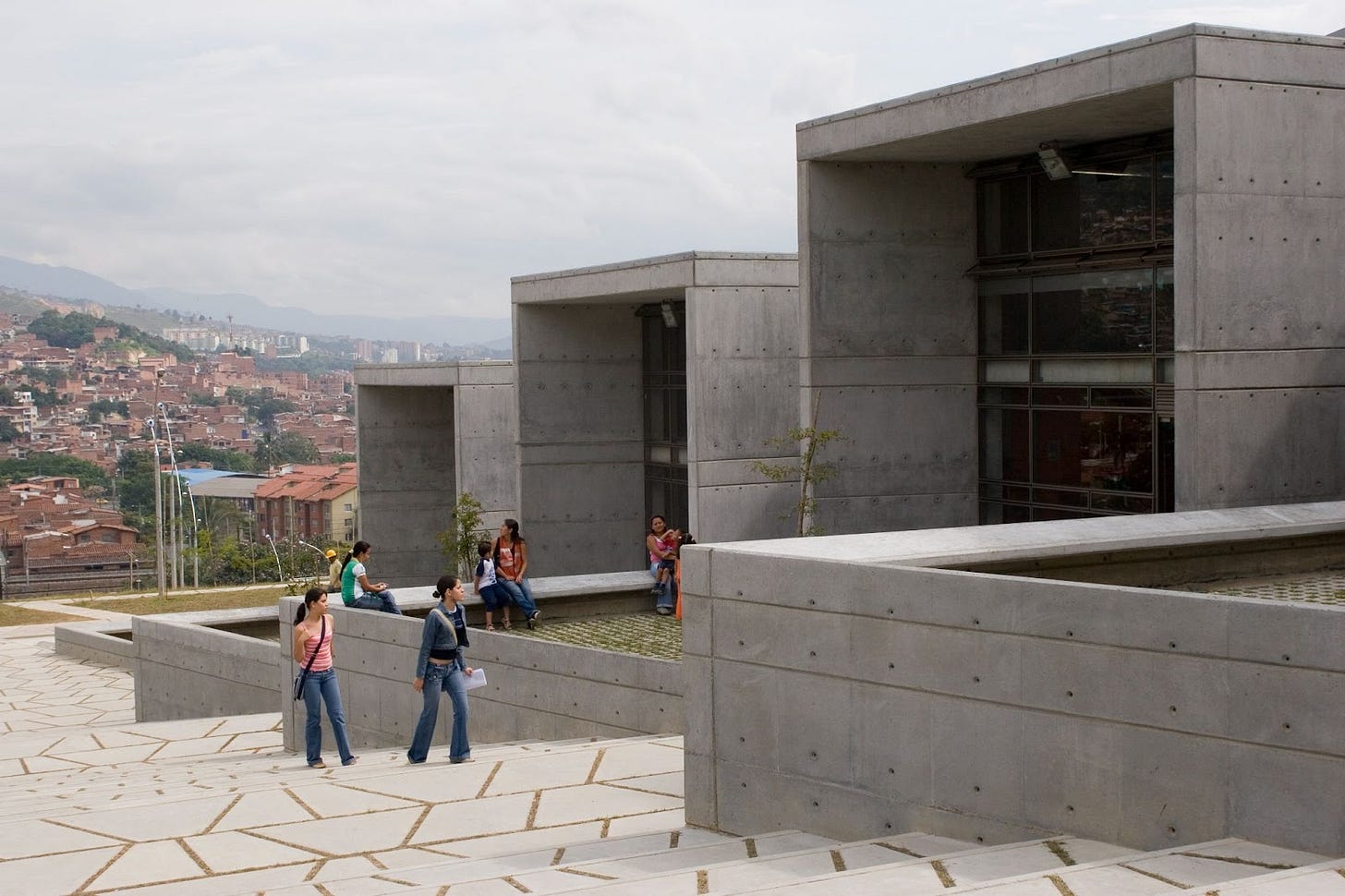
Happiness studies have shown that community spaces enable social connection, one of the strongest predictors of life satisfaction. According to Harvard’s longest-running happiness study, strong relationships are the most reliable driver of lifelong wellbeing. These shared spaces encourage people to connect across backgrounds, building trust and empathy.
Creative spaces
A Happy City needs creative spaces where people are free to play, imagine and express themselves. These spaces are often public and non-commercial, as well as open and participatory, offering moments of beauty, music, dance and colour that break the monotony of everyday life. From street art to music, to social dance events, such creative spaces allow for spontaneous expression and storytelling.
Across the world, colourful murals have transformed neglected neighbourhoods by turning plain facades into vibrant works of art that reflect collective identity and pride. These murals often come with strong social messages that relate to lived experiences among local residences. For example in Lisbon, Portugal, a Zambujal neighbourhood has been reinvigorated through the Zambujal 360 project creating murals to represent each of the UN’s SDGs based on the local context. In Brazil, artists and residents paint the facades of houses in Favelas, making it a collective venture, while in London’s Brick Lane, anyone can graffiti on the designated living art wall.

Creativity is a powerful source of happiness as it increases positive emotion and a sense of flow while reducing stress. According to Flow Theory, creative activities often require deep engagement and intrinsic motivation which leads to greater life satisfaction and psychological wellbeing. Studies also show that engaging in creative activities has also been shown to reduce the stress hormone cortisol and support emotional regulation.
Green and blue spaces
We can all feel it, and now, science is backing it up: Green and blue spaces have a positive effect on our psychology, including increased optimism and positive affect. While scientists still struggle to isolate their effects on reducing depression or anxiety (see Burke et at., 2023), they agree on the gains in psychological outcomes from visiting parks, lakes, and other nature-related spaces in cities.
In a Happy City, green and blue spaces should be accessible to all within 10 to 15 minutes, including urban forests, parks, waterfronts and gardens. Of course, this depends on a city’s climate and geographical conditions. But examples such as Seoul’s Cheonggyecheon River restoration show that where there is a will, there is a way: In just over two years, the river transformed from a congested highway into a thriving green corridor that has improved both the city’s ecosystem and its citizens’ quality of life. Elsewhere, the planting of Miyawaki microforests—dense native forests that grow in small plots—offers a scalable solution for nearly any city.
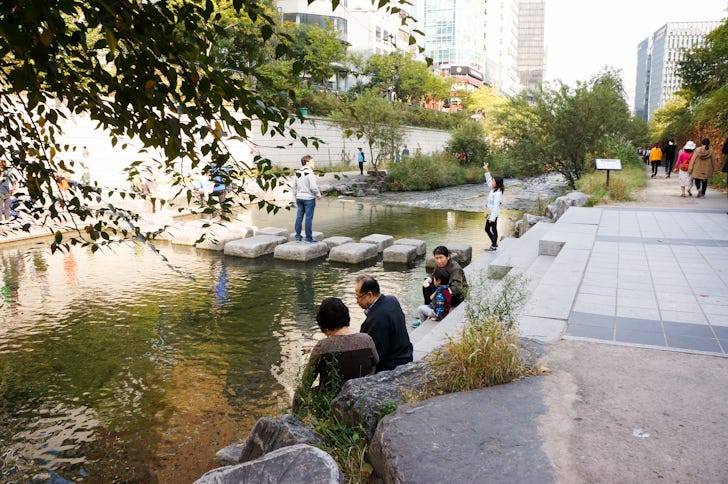
From urban parks and rivers to small gardens and waterfronts, these natural elements not only enhance mood and reduce stress but they also promote cognitive restoration. Given that urban settings demand a great amount of directed attention (e.g. crossing the road, making decisions), which is tiring for our cognitive system, experts argue that natural environments allow for contemplation such as watching leaves fall and water flow, which gently engages the mind while allowing the brain’s attention systems to recover. Studies in Attention Restoration Theory have shown that a walk in a natural setting can result in improved memory and attention, while others found that a 90-minute walk in nature can reduce rumination.
Active and accessible mobility
Walking, cycling, running, and even swimming are more than just modes of movement in a Happy City. They are acts of wellbeing, freedom and joy. Active mobility, along with reliable, safe and equitable public transport allows people to move through the city with ease and dignity.
In Copenhagen for example, cycling is a great equaliser: around 64% of commuters bike daily on countless free cycle lanes according to the Urban Cycling Institute. With dedicated infrastructure and strong political support, close to half of all trips to school and work are made by bike, with 97% of residents report being satisfied with cycling conditions. This model shows us what’s possible when streets are built for people and not just cars.
Implementing more active and accessible transport does not have to be difficult. In Latin America, cities like Bogotá and Mexico City turn main thoroughfares into “Cicloviás” on Sundays, prioritising walkers and cyclists over cars. Access to good public transport links also results in reducing loneliness as it facilitates social interaction and moments of connection.
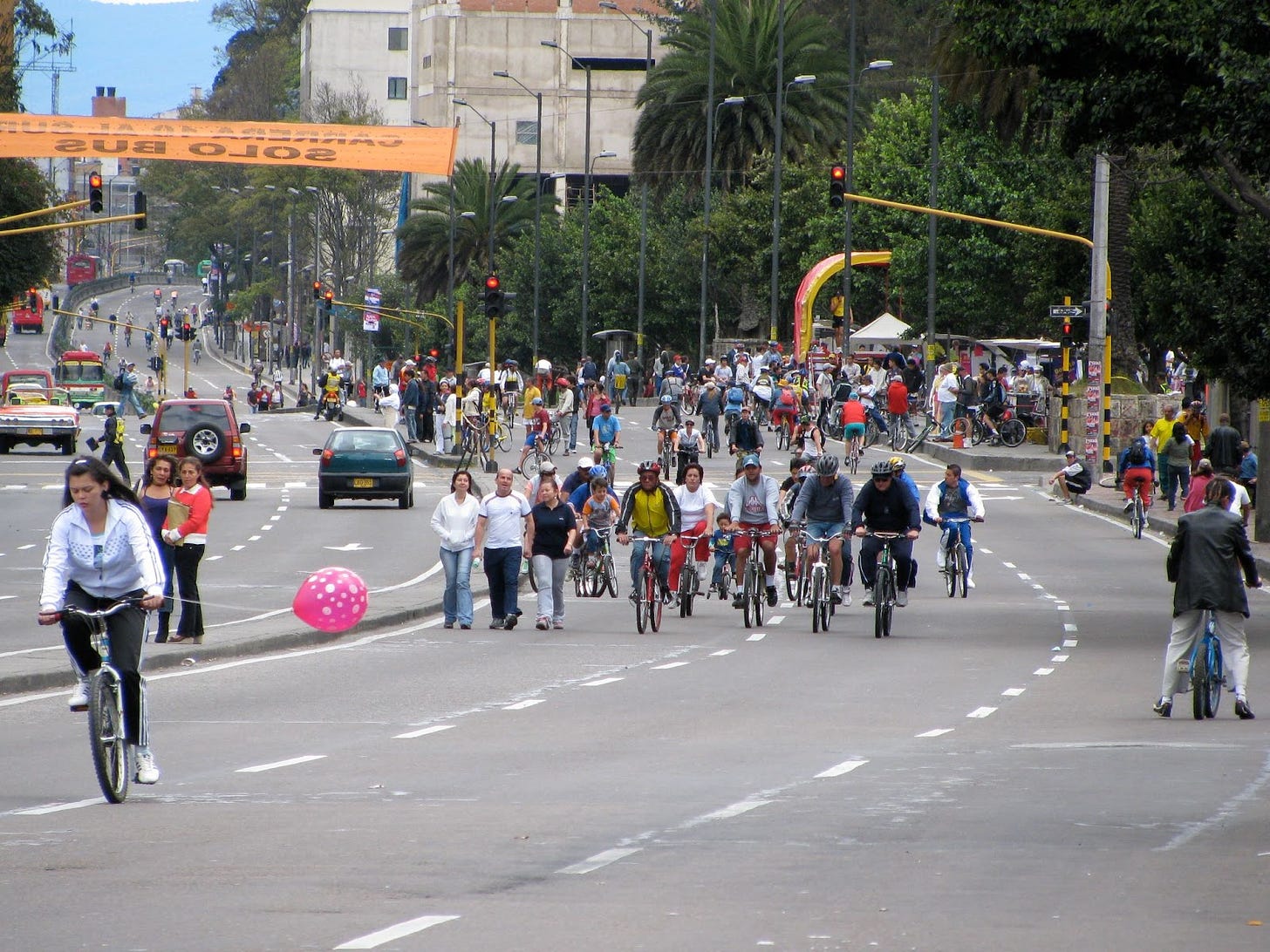
Physical activity and access to good public transportation is demonstrably linked to happiness and wellbeing. According to the WHO, regular physical activity is linked to reduced depression and anxiety as well as improvements in overall mood. Access to good public transport links also helps reduce loneliness, as it facilitates social interaction and supports a feeling of greater connection. According to the OECD, efficient transport services are key to increasing social cohesion and promote wellbeing in urban areas.
Human-scale design
Finally, a Happy City is one that feels good at eye level. Human-scale design focuses on how people experience streets, buildings and public spaces on foot and face to face. This approach values comfort, connection and community, inviting citizens to slow down, interact and feel at home in their environment.
Denmark has become a global reference for this approach thanks to the work of Jan Gehl, a pioneering architect and urban planner who advocates for cities on a human and pedestrian scale. His research in Copenhagen looks at how design influences behaviour by encouraging walking, cycling and interactions through dense but low-rise buildings and pedestrian-first infrastructure. His ideas are brought to life in the “Human Scale” film, which showcases how cities can be reimagined around people, not cars or buildings.
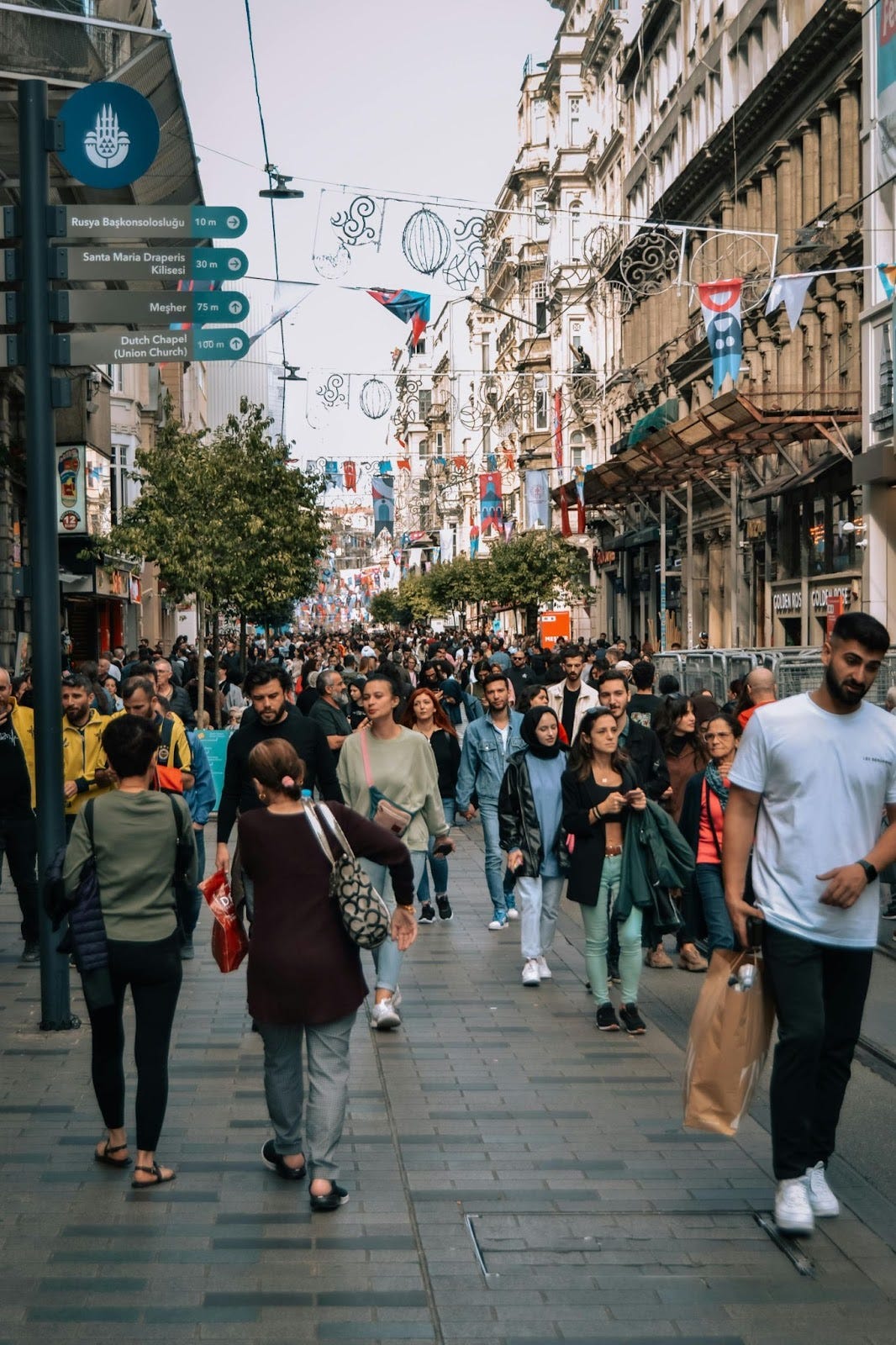
From a happiness perspective, human-scale environments support social connection, psychological safety and positive affect. Studies show that walkable, human-centred cities promote greater trust in neighbours, lower stress and higher life satisfaction. Eye-level design also encourages micro-interactions such as greeting a passer-by or pausing to chat at a bench, which research has linked to increased daily wellbeing. When urban design centres on people, not only does the city become more inclusive and equitable, it also becomes more joyful and vibrant.
Humanising our cities: connection and commitment
Happy City interventions do not have to be expensive, as these examples show. Often, political will and community buy-in are much more important to achieve improvements in not just the built environment, but also the wellbeing of residents. Metrics such as subjective wellbeing surveys, the OECD Better City Life Index and the Happy Cities Toolkit help to quantify the importance and impact of designing for happiness. Charles Montgomery summarises his key message as follows:
“Most of all, the happy city should enable us to build and strengthen the bonds between friends, families, and strangers that give life meaning—bonds that represent the city’s greatest achievement and opportunity. The city that acknowledges and celebrates our common fate, that opens doors to empathy and cooperation, will help us tackle the great challenges of this century.”
Follow along as we dive deeper into each of the ingredients for the Happy City over the upcoming months!
